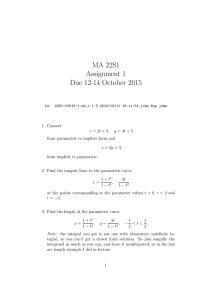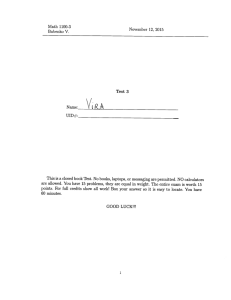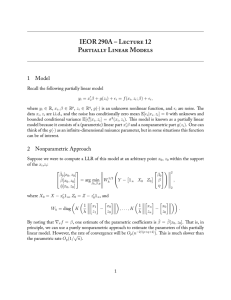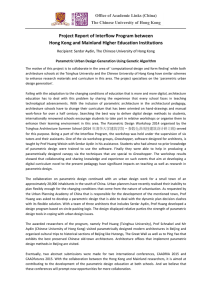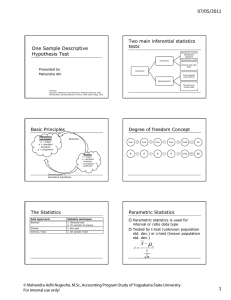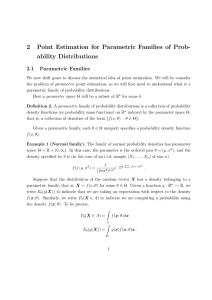MATH 152 - SPRING 2015 FOR PARAMETRIC FUNCTIONS - LECTURE CORRECTIONS
advertisement
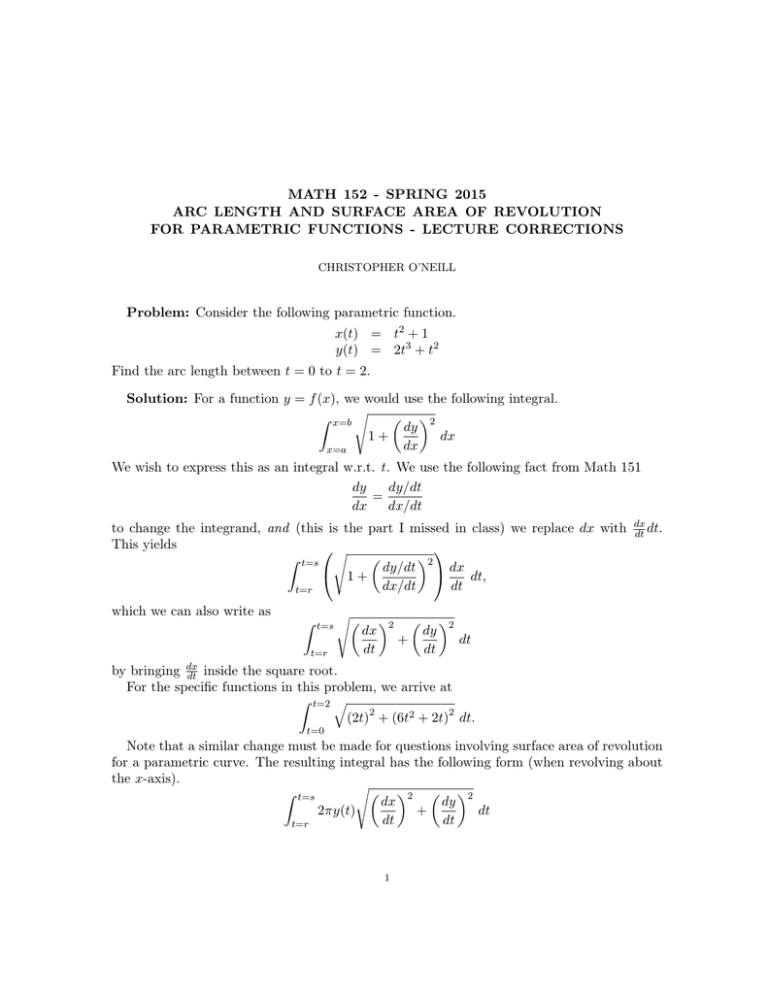
MATH 152 - SPRING 2015 ARC LENGTH AND SURFACE AREA OF REVOLUTION FOR PARAMETRIC FUNCTIONS - LECTURE CORRECTIONS CHRISTOPHER O’NEILL Problem: Consider the following parametric function. x(t) = t2 + 1 y(t) = 2t3 + t2 Find the arc length between t = 0 to t = 2. Solution: For a function y = f (x), we would use the following integral. s 2 Z x=b dy 1+ dx dx x=a We wish to express this as an integral w.r.t. t. We use the following fact from Math 151 dy dy/dt = dx dx/dt to change the integrand, and (this is the part I missed in class) we replace dx with This yields s 2 Z t=s dy/dt 1+ dx dt, dx/dt dt t=r which we can also write as Z t=s t=r s dx dt 2 + dy dt dx dt dt. 2 dt by bringing dx dt inside the square root. For the specific functions in this problem, we arrive at Z t=2 q (2t)2 + (6t2 + 2t)2 dt. t=0 Note that a similar change must be made for questions involving surface area of revolution for a parametric curve. The resulting integral has the following form (when revolving about the x-axis). s 2 Z t=s dx 2 dy + dt 2πy(t) dt dt t=r 1
